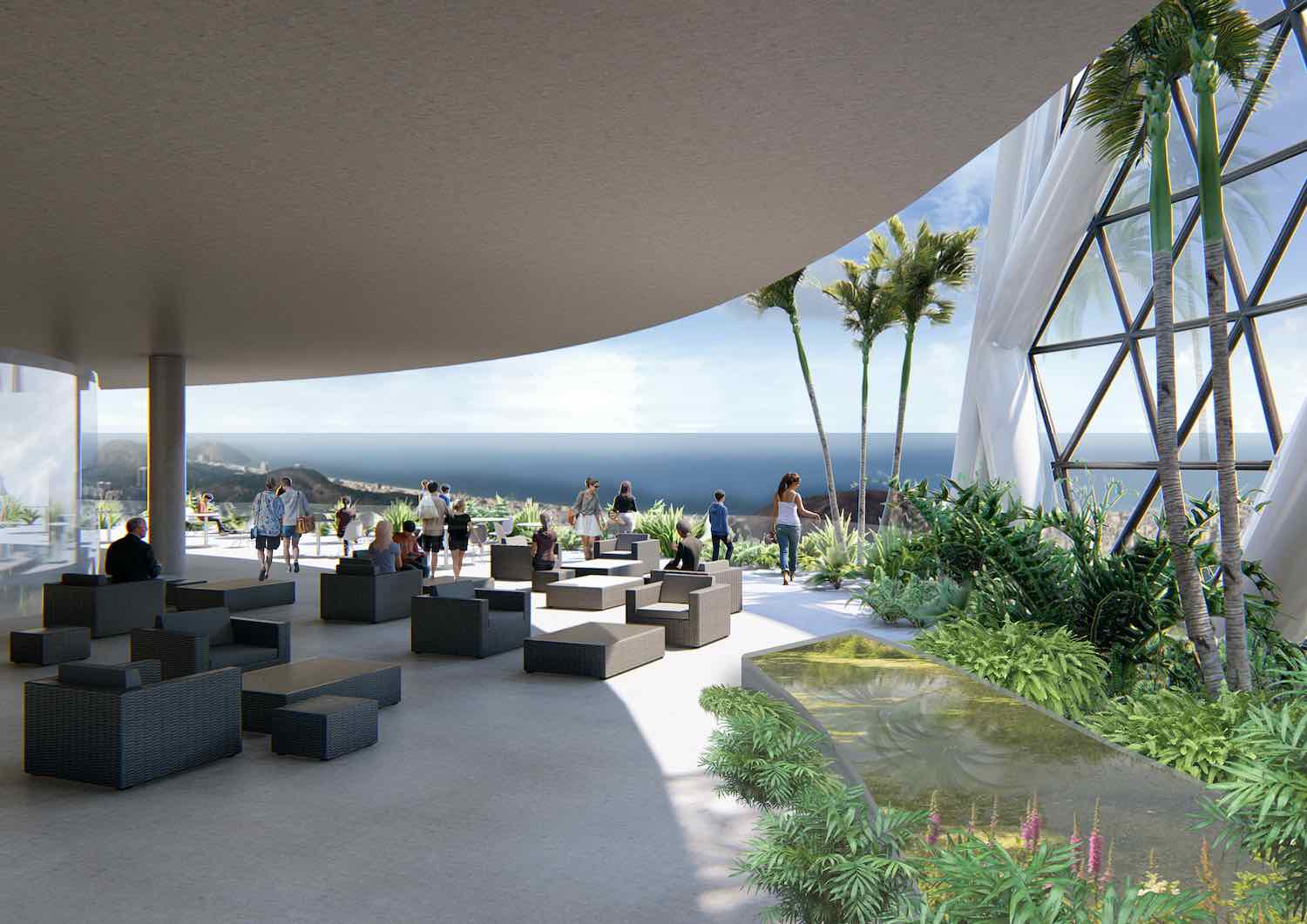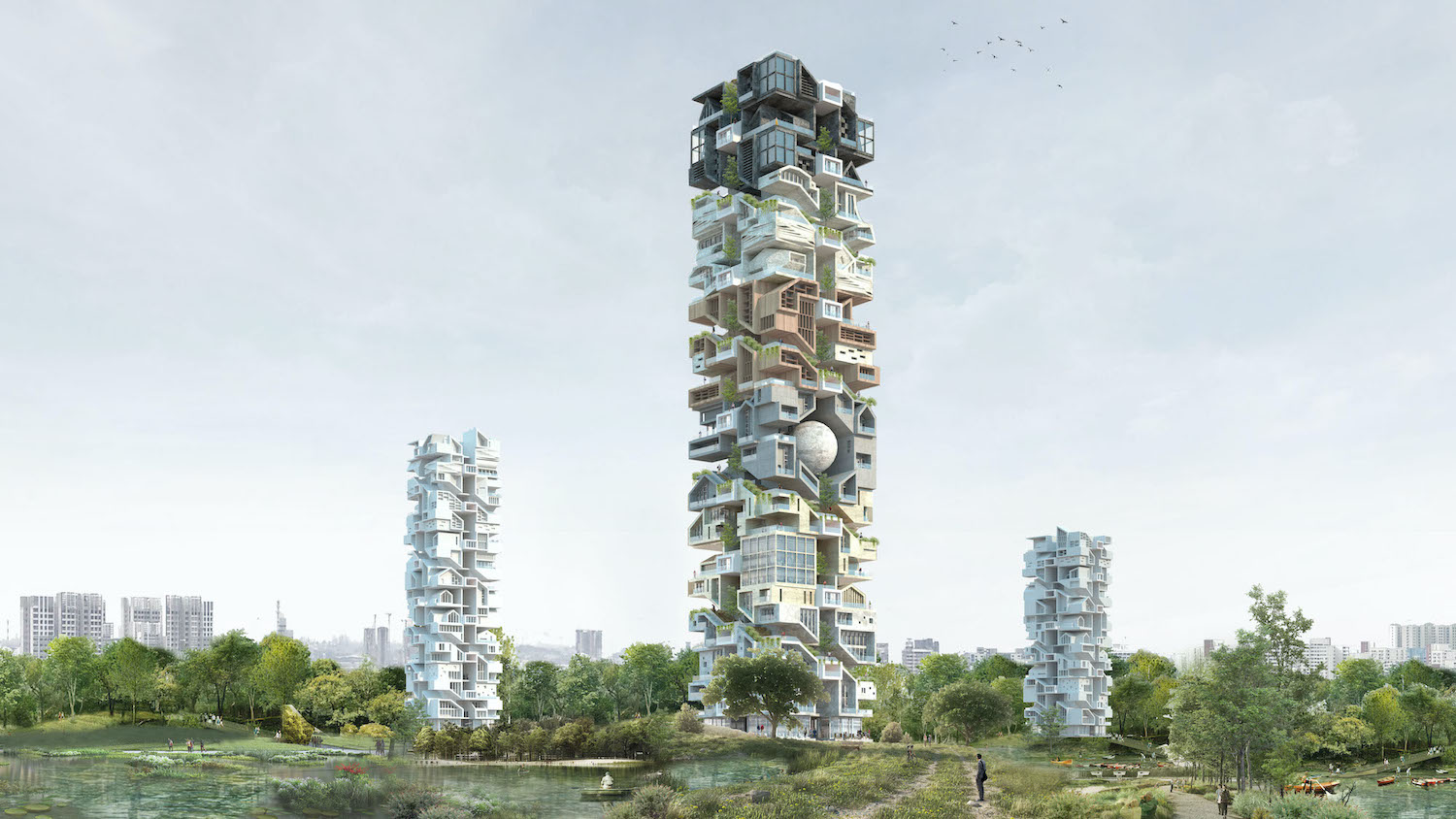The Hybrid Skyscraper is located in the neighborhood of Penha in the city of Rio de Janeiro, Brazil, designed by Sofia Videla and Sol Rivero Negri.
Project idea:
The challenge was to create a tower of 330 meters high, with a mixed program that responds to the needs of the generation of digital nomads, a phenomenon that is taking place and settling in the western society in these times.
The program given included: a residential area, a hotel, offices, coworking spaces, shopping and a convention center. The challenge was to think about work, living and leisure as digital nomads understand it, as well as seeking for a local expression that takes in consideration its culture and the tropical climate.

Project description
From a complex reading of the site and the program given, the project proposes to solve the problems corresponding to the immediate environment through the ground floor, composed by several levels. It offers a green public space responding to the need of receiving a large flow of people from the train, located at one of the laterals that composes the lot. This park is in depression, in direct connection with the convention center and the recreational activities, its intention is to mimic the spatiality and upward movement of the green tropical hillocks that are characteristic of the Brazilian landscape. The train station is integrated with the project and it has a continuity not only at level zero, but also on a public level above to solve the dangerous crossing, in the intersection of: a highway, the Rapid Transit Bus and other streets.

One of the complexities of the tower is the continuity between the horizontal resolution (in the first levels) that responds to the immediate environment and the vertical one that responds to the resolution of the city in height and being part of the Rio de Janeiro skyline. Therefore, the project solves the union between both parts with a curve that rises exponentially, transforming the park in the center - the green heart - into a vertical park.

All the green spaces are given in the center, where the anomalies flourish, like: the common living spaces, the break time spots for the offices and best-equipped hotel suites. That is why there is a break in the structure, the resolution of the central core and the structural façade of Diagrid are interrupted to give rise to the spatial anomalies. The “rib” opens where the best conditions exist: shelter from the wind, a north orientation, and the best views of the sea and the city.

The hybrid tower is intended for "digital nomads", so it is pertinent to think beyond the proposed program which spaces demand this type of users, who travel constantly and live attached to technology. According to recent studies, millennials seek to create community and enjoy being outdoors, that is why we propose that these collective spaces occur towards this green vertical park, sharing every 8 to 10 departments a space where they can interact in community, but in a more intimate way compared to the public spaces of the tower. The importance of generating these small communities also responds to the nomad way of living, the objective is to connect people who live for short periods in the tower, giving rise to new interrelationships between neighbors born from the spatiality that encourages it.

The building has in the center, on the north façade, a horizontal reading that not only breaks with the continuity of the diagrid facade, but also its position is the one that responds to the sun at the north orientation in the southern hemisphere. The other facades are solved in a single triangular panel that completes the diamonds of the diagrid. Each panel is hermetic, with a glass enclosure and diagonal parasols that are divided into different types. Each typology has more or less parasols depending on the orientation, which can be read from the outside as continuous lines that fade towards the south, where the shelter from the sun is no longer needed.

Technical information
The structure used is diagrid. Diagrid (acronym for Diagonal Grid) is a structural engineering and architectural design to build large buildings with steel frames (or other material with similar qualities) based on beams and supports assembled in a triangular (or "diagonal") shape. This structural form requires less support material, thus saving money, energy and time costs.
The Diagrid has also avoided the use of large columns (mainly the corner ones) and provides a better distribution of the load of forces, particularly useful in the case of a construction that must withstand significant stresses. Among the buildings that have already been built using this method, in addition to the Hearst is the one designed by Norman Foster, on 30 St Mary Ax Avenue in London, and which is known as "the Gherkin", due to its appearance.











Project name: Hybrid Skyscraper
Architects: Sofia Videla and Sol Rivero Negri
Location: Penha, Rio de Janeiro, Brazil
Design year: 2020
University: FADU - Universidad de Buenos Aires, Facultad de Arquitectura, Diseno y Urbanismo, Buenos Aires
Argentina





